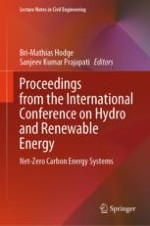2024 | OriginalPaper | Buchkapitel
Wind Resource Assessment Using Weather Research Forecasting (WRF) Tool Over a Complex Terrain: A Case Study on Southern Region of Andhra Pradesh, India
verfasst von : Penugonda Sunil Babu, M. K. Singhal, R. P. Saini
Erschienen in: Proceedings from the International Conference on Hydro and Renewable Energy
Verlag: Springer Nature Singapore
Aktivieren Sie unsere intelligente Suche, um passende Fachinhalte oder Patente zu finden.
Wählen Sie Textabschnitte aus um mit Künstlicher Intelligenz passenden Patente zu finden. powered by
Markieren Sie Textabschnitte, um KI-gestützt weitere passende Inhalte zu finden. powered by
